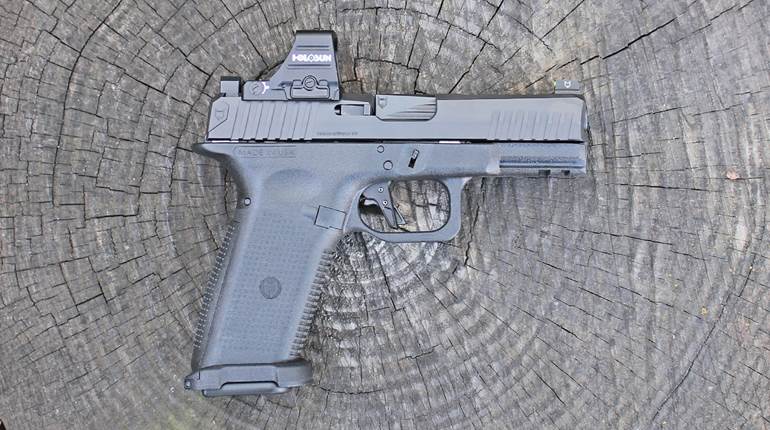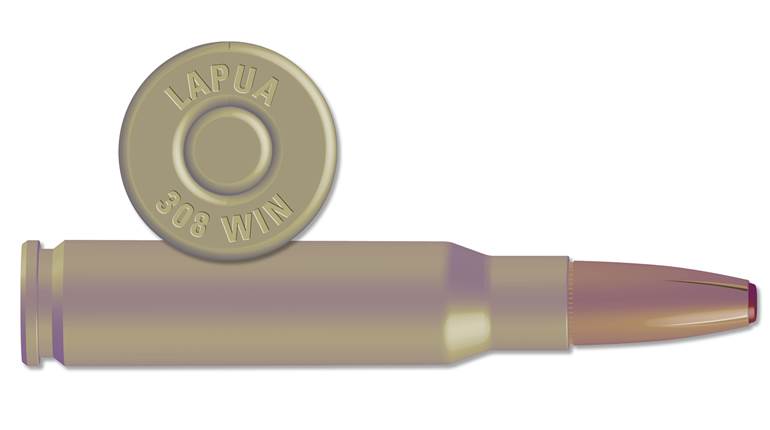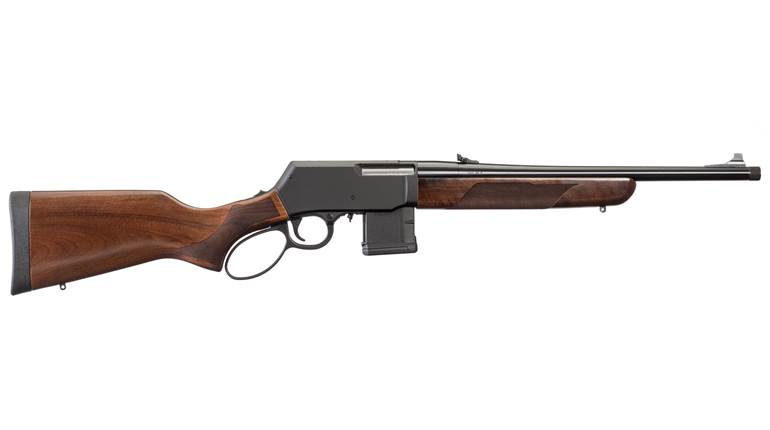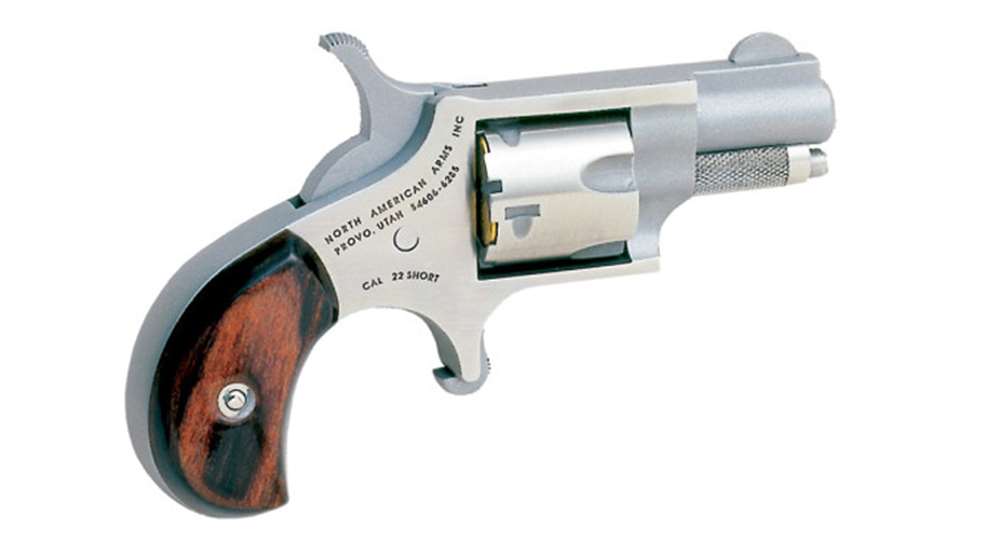
How small can a handgun be and still be enjoyed at the shooting range? There are functional miniatures that fire tiny proprietary cartridges, such as the C1ST revolver manufactured by Swiss Mini Guns. However, with a price tag of 6,500 Swiss Francs ($6,450 U.S.) and ammunition costing 10 Francs ($9.97) per round, before adding in shipping and taxes, this exquisitely small revolver is not exactly an economical option.
So, let us adjust the criteria for petite poppers to only include what could be described as “practically” the smallest handguns. Along with considering their external dimensions and unloaded weight, the guns have to be chambered in calibers that shooting enthusiasts can (theoretically) purchase over-the-counter at a local sporting goods store. This interest of mine led to a piece posted last year called 6 of the Smallest Handguns on the Market Today. 
The winner of the smallest handgun title was, and still is, the North American Arms (NAA) NAA-22S single-action revolver, which will be referred to hereafter as the Short for, well, brevity. Not only is this version of the NAA Mini revolver just about as small as a real gun can be, it's in current production (in limited runs), it shoots a standard cartridge (the .22 Short) and it has a palatable suggested retail price of $226.
What I appreciate the most about the Short is that the company does not treat it like a range toy or a gimmick. It's built to the same standards, using the same stainless steel and precision machines, as the rest of NAA's product lines. The Short is a single-action revolver constructed entirely of stainless steel with a polished cylinder, polished flats and satin finish on the curves.
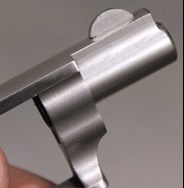
The rounded 1.125" barrel has the knurled head of the cylinder pin below it with a top rib that meshes with the gently curved top strap of the frame. The front sight is an old-fashioned half moon fixed blade. There is no rear sight. However, it’s easy to form a sight picture by using the squared-off edges at the back of the frame, on either side of the hammer slot, and holding the front site on top of it. Featuring a textured hammer spur and a fixed, hatchet-like blade, the hammer must be manually cocked for each shot. This eliminates the need for a trigger guard.
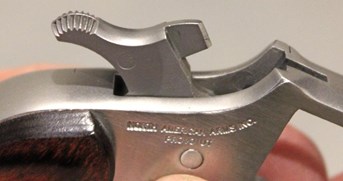
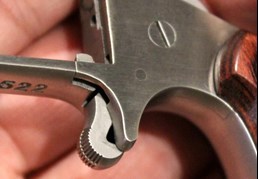
The hammer has three primary positions: fully forward, fully cocked or half-cocked. NAA Mini revolvers have a safety system that allows these revolvers to be carried with all their chambers loaded. The 5-shot cylinder has notches cut between the chambers that allow the hammer blade to rest in the fully forward position until the revolver is cocked. The trigger is not much more than a textured stud that sticks out from the frame. However, it has a smooth, short stroke that breaks cleanly with 4 lbs. 8 oz. of trigger pull. 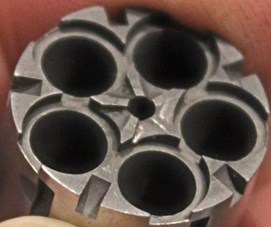
The grip frame is a reduced scale birdshead configuration. The flower-petal sized laminated rosewood grip panels are secured in place by a single slender screw. For those who are wondering, the answer is yes, the NAA-22S can be fitted with the recently released Laserlyte V-Mini grip-mounted laser sight. The Short Mini shares the same grip profile as the .22 LR models, so it can be just as tacti-cool as larger handguns.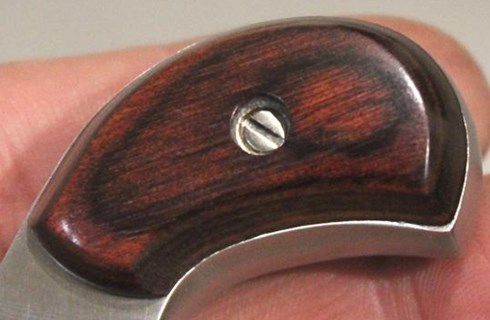
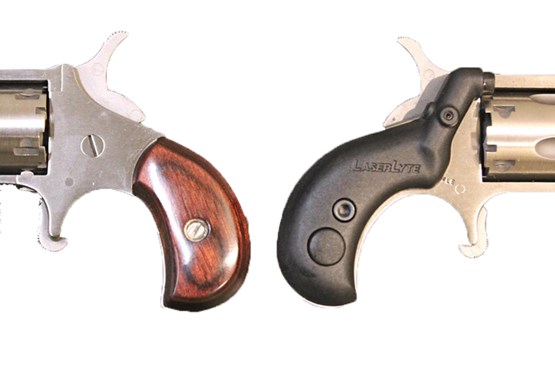
The Short's precision-machined components, top-notch factory fitting and hand-tuned action give it the look and feel of a high-quality handgun, even though you may need to put on your reading glasses to appreciate it.\
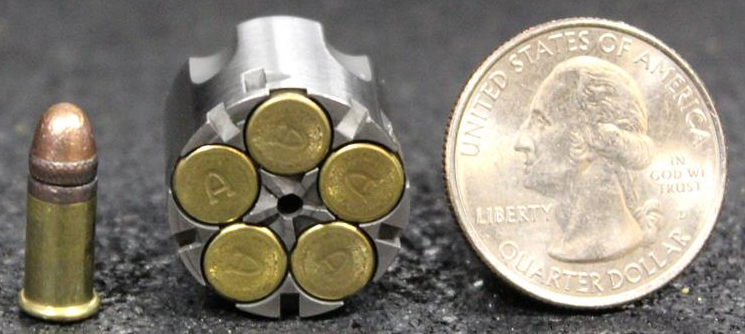
I've wanted to shoot the mini-est of all Minis for some time now. However, the rimfire ammunition shortage has kept the test on hold because there was no ammunition available. Thanks to the recent election of a more gun-friendly U.S. administration, some rimfire manufacturers are resurrecting their .22 Short loads. Although CCI and Remington still list .22 Short in their catalogs, as of this writing, only Aguila Ammunition seems to be shipping it right now.
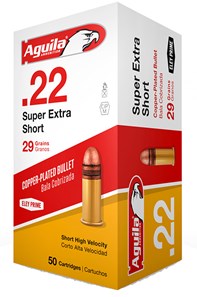
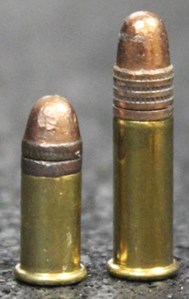
The good folks at Aguila were kind enough to send me something I feared I might not ever see again—an unbroken brick of .22 Shorts. The load provided for this test is the company's Super Short Extra. It’s topped with a 29-gr. round-nose, copper plated bullet. Next to a .22 Long Rifle cartridge with a 40-gr. bullet it looks positively pint-sized.
Believe it or not, .22 Shorts are loaded to different velocity levels, just like .22 Long Rifle rounds. The softest shooting of the bunch are the CB loads with rifle barrel velocities of around 700 fps. Target loads scoot along at about 830 fps with the fast hollowpoint loads maximizing the cartridge's performance potential by launching at around 1110 fps. The Aguila Super Short Extra is one of the hot loads with a listed rifle velocity of 1095 fps, generating 77 ft.-lbs. of energy.
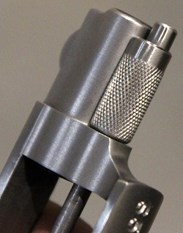
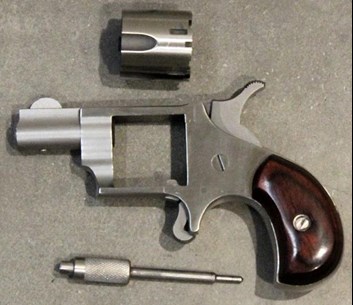
At the shooting range, the loading and unloading procedures for the Short called for the same steps as other Minis. Place the hammer in the half-cocked position and then depress the button on the front of the cylinder pin to remove it from the frame. Tip the cylinder out of the right side of the frame. Use the cylinder pin to poke out the spent brass, load the empty chambers and then place the cylinder back into the frame. Reinsert the cylinder pin, cock the hammer and proceed with the noise making.
As one might expect, this little revolver's level of felt recoil will not rock your world. But the gun still rolls back in your hand. I've learned from years of shooting Minis that you have to bear down on the grip with the middle finger while tucking in the ring and little finger tightly to provide a stable platform for the rounded base of the birdshead grip. As you can see, there was no practical way to use an adjustable shooting rest, so I leaned into the bench and held on tight.
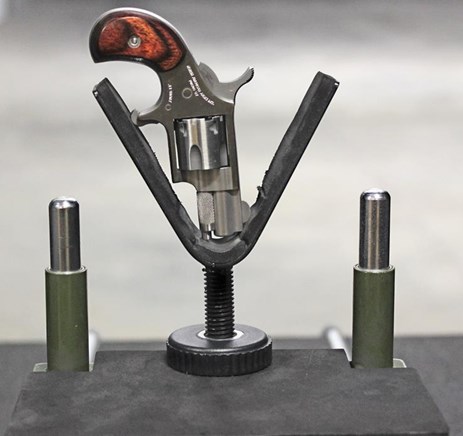
Ten shots across a chronograph revealed that the Short’s snubby 1.125" barrel caused a velocity drop of more than 300 fps for an average flight speed of 771 fps. and an energy level of 38 ft.-lbs. I believe the short profile of the bullet and the velocity drop contributed to this particular Mini being less accurate than other models I've tested. With the short-barrel .22 Magnum frame Minis, like the Pug Carry, I can keep 5-shot group sizes to around 1.5" to 2" at 7 yards. The short averaged 2" groups at 3 yards, but at 7 yards the patterns opened up to nearly 4.5".
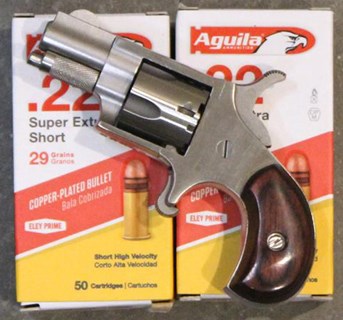
If you're in the market for fire-breathing hand cannons capable of causing small buildings to tremble to their foundations, then the North American Arms NAA-22S Mini revolver chambered in .22 Short is not what you're looking for. For those who are considering an NAA Mini for use as a deep concealment or backup gun, the much more potent .22 Magnum models are a better choice. Their larger grips are easier to manage and they can be fitted with .22 LR conversion cylinders to cut down on practice ammunition costs. If you want a small-framed Mini to use as a kit gun or recreational plinker, then go with .22 LR frame and enjoy shooting the same bulk-box fodder as your favorite rimfire rifle.
The Short, however, should be respected and collected for what it is—an artistically executed exercise in scale reduction meant to show off the manufacturer's skill. This revolver was, in its own way, just as fun to take to the range for its pure novelty as a big bore blaster or vintage model. Running the gun was an experience unlike any other. Thanks to NAA's attention to detail and quality, this is a revolver that collectors can enjoy shooting at the range just as much as they appreciate having it in their collection.
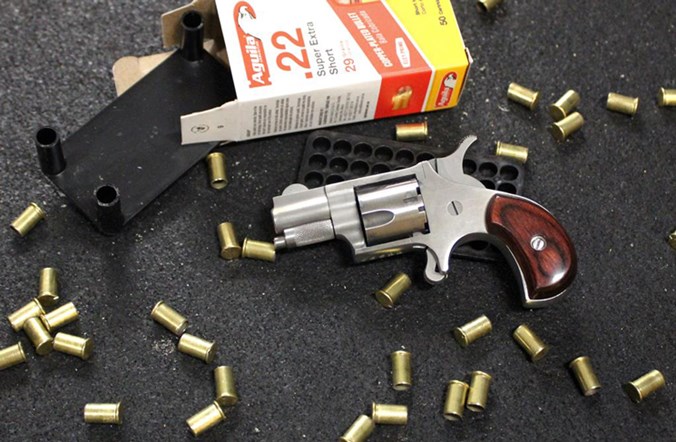
Specifications:
Manufacturer: North American Arms
Model: NAA-22S
Action: Single-Action Revolver
Caliber: .22 Short
Finish: Satin Stainless Steel
Grip Frame: Birdshead
Grip Panels: Laminated Rosewood
Front Sight: Fixed Half-Moon
Rear Sight: None
Barrel Length: 1.125"
Overall Length: 3.63"
Cylinder Length: 0.77"
Cylinder Width: 0.76"
Grip Width: 0.88″
Height: 2.38"
Weight: 4.1-oz.
Capacity: 5 Rounds
Twist: 1:12” RH
Rifle Grooves: 8
Accessories: Locking Steel Storage Box, Owner's Manual
Suggested Retail: $226















